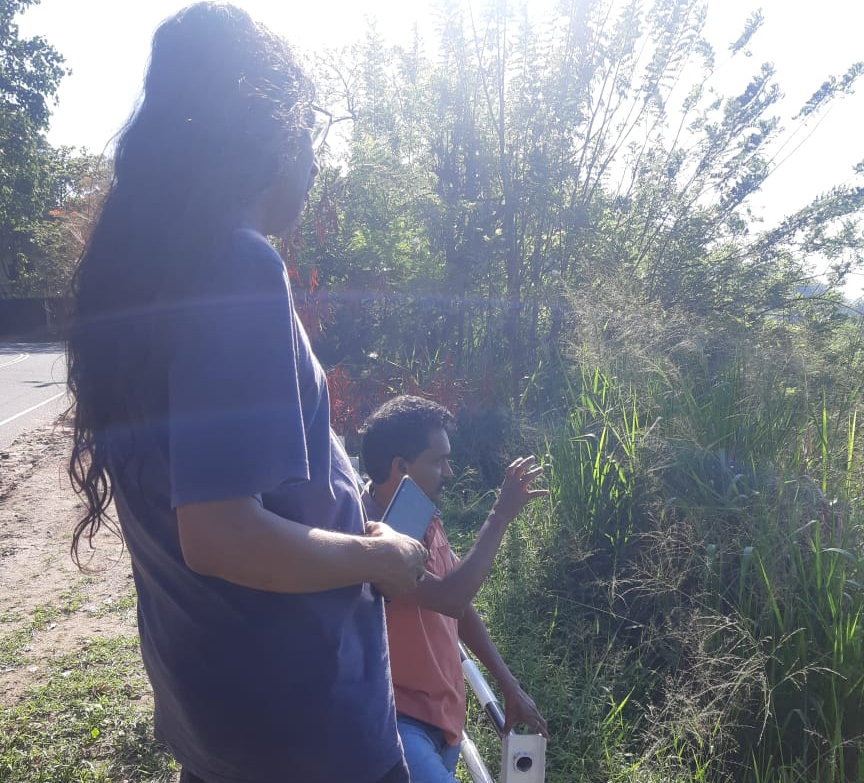A problem 70 years in the making
Actually, it is a host of problems that started off with one problem: Development astigmatism, myopia and hyperopia. I am being kind here. What I just said could be termed “Development Aggression” or “Development Terrorism” which are harsher, starker and truer phrases that can be used to describe what is happening. Very well know as “facts” these days but considered “jokes” those days, were the issues highlighted as far back as 1986 by Lewis in “Sri Lanka’s Mahaweli Scheme: The damnation of paradise” that includes the loss of biodiversity, habitats, involuntary resettlement and/or migration of humans and animals, changes to weather patterns, the negative rise of local water tables and the increase in agro-toxin usage.
Back in the day, it was this very same mega project that created the first environment action groups in Sri Lanka such as OSLEN (Organization for the Safety of Life and Environment) which was the predecessor organization of the Green Movement among many others. The warnings sounded by those fledgling attempts have become a vociferous cacophony now with everyone and their pet parakeet fighting each other to jump on the environment band wagon.”

The old proposal for the victoria dam. The Mahaweli Scheme was the reason why environment movements began in Sri Lanka.
The Greens, always two steps ahead of most and three times sharper have two things going for them that are rare. One is the ability to see beyond the obvious. The other is to recognize that IPLCs know far more about far more than they ever will.
We already knew that the potpourri of problems besetting our rivers at their sources are interconnected. We already knew that if these were to be solved, then that had to come from the people most affected by the mood swings and terrain swings of a given ecological system. Those people are not environmental protectionists, they are not researchers, they are not policy makers. They are the peoples living in these areas.
We already knew that issues highlighted by the likes of Lewis 40 years ago are now multiplied to the nth degree through rapid increases in population, more aggressive development, less tolerant and less human-centric laws and of course the ultimate multiplier – climate.
We knew (for example) that the gross storage capacity of 722,000,000 m3 of the Victoria dam is now cut by a full, eye-popping third due to siltation. We already knew that ignoring catchment management in lieu of the so-called “protected area management” (read: fence the bloody thing and let only those who are sweet to us enter) has resulted in an unseen and unheard environment disaster in loss of net water availability that has affected everything and everyone for miles and miles.

The Mahaweli runs dry. In many instances, the death of a river downstream is seen by the development aggression upstream.
We knew that water must be the start-all and end-all of any realistic treatment of environment issues in the areas that we were focusing on. We also knew that globally, there is a whopping 53% loss of water in still-water bodies such as reservoirs and that the same is true in Sri Lanka as well. Take that statistic under advisement and consider this: Only 3% of the surface is covered by lakes across the world but they hold 90% of liquid surface freshwater that are essential sources for drinking water, irrigation and power while providing habitat for plants and animals. That’s a bit of a shocker isn’t it?
Yet, we know that science is a limited and limiting tool and we are not subscribers to exclusive faith in desk study. We are not armchair detectives by any means. So, we knew better than to come to erroneous conclusions about the ways and wiles of life and environment without getting the real deal from the people involved.
So, with SAFER, as part of our inception study, we gathered key representatives of the communities from separate segments of the VRR and KCF. The first was at the source of the Victoria dam which is the first of all disasters in the area. The second was the community living along the trace of the VRR/Avenue of Kings (Raja Weediya) and the third were the downstream Adivasi indigenous communities living in the lower areas into which the Mahaweli (or whatever is left of it after its mangled and tortured journey across three dams and six reservoirs) flows.
We used the SCORECARD (Strategic Commons Organization, Regeneration and Enhancement: Community Analysis of Realities and Dynamics) we developed under COLIBRI for our purposes. A bit unfortunately perhaps, the resource persons who were seconded into the effort had gotten the whole idea wrong, or, perhaps, had no idea at all, on the differences between SCORE and other ways of acquiring community knowledge and degraded the exercise into a glorified hybrid of KPIs and PRAs. Not good. Not measurable. No importance to science but it did cover the NGO ground better than most. Oh well. The trials and travails of data acquisition *heh*
The results nevertheless, were, as always, revealing.

Three generations of the Vedda Community. Second from left,, Bandiya the Chieftain of the Henanigala group. On his left, Indika, the modernized version of the Veddas who was steeped in Adivasi lore. On the right mid-aged Vedda women who were suffering from microfinance b.s.
The Vedda communities were the most insightful. They said that the problem did not start with the Mahaweli although it was the most impactful. They said the issue commenced with settlement back in the 1940s. Wow! Indeed. That was when the idea of “resettlement and damage by the state for more votes first commenced!” They revealed the horrors visited upon them by their disenfranchisement from their traditional lands by that same madness and their subsequent fall with this: “කබල් පොජ්ජෙන් ගිනි පොජ්ජට මංගච්ච” (We have fallen out of the frying pan into the fire) and this: “අපේ ඇත්තෝ දැන් කතා දාන්නේ දියවැඩිය පොජ්ජ, හර්දාබාධ පොජ්ජ, වකුගඩු අබාධ පොජ්ජ” (Our peoples now speak only of diabetes, heart disease and kidney disease). Their women spoke of the sleepless nights they had to spend because of microfinance companies who had neither the right not  any business to screw with Adivasi communities because that was a violation of UN conventions on Indigenous Peoples.
any business to screw with Adivasi communities because that was a violation of UN conventions on Indigenous Peoples.
The peoples on the Hulu Ganga summed their problems up succinctly “The mist is gone”. It was a brilliant catchall of the damage of small-hydro plants, water bottling factories, the Victoria dam and of course, their ququalified claims that was the ultimate proof of our own conclusions “The impact of community anthropogenic activities in the areas is marginal”.
The people of the VRR central areas: “When we want to cut a tree we grew in our own gardens, we have to wait a year to get approval from the DWLC. So, who cares, they don’t. We simply walked into the jungle and cut down two of the same trees to build our homes”. Twice the damage because the so-called protectors were clueless. So, all that the community was saying was “Fuck the DWLC. They are a bunch of jokers. They are the cause of our illegal activities”. On the human-wildlife conflict that has everyone up in some kinda arms these days, well, their take was revealing “we cannot go to a funeral or a wedding as a family anymore. We have to leave someone behind to protect our small plot crops”. The message was simple: It was not the yield that they lost that was the problem. The torque macaque was actually destroying their ways of life and putting unmanageable social pressure on them.
The overarching conclusion we got from them was that their battle with authorities, regulators and idiot policies and laws were a) impossible to resolve through legislative systems and b) destroyed their own community customs and ways of life. This was a resounding affirmation of our own observations on these matters that we presented during the kick-off.
We have our work in the KCF-VRR cut out for us. LETS GO!












